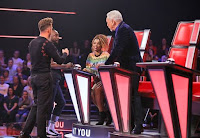THEORY 3: HOW AUDIENCES CONSUME MEDIA
PASSIVE (1920s - 1970s)
Are audiences that accept the messages encoded in a media and do not challenge representations, therefore, more likely to be directly affected by the messages
- Hypodermic Needle Theory: a model of communication suggesting that an intended message is directly received and wholly accepted by the receiver
- Desensitisation: occurs when an audience is repeatedly exposed to shocking or violent content, where repeated experience numbs the effect
The Hypodermic Needle Theory makes you believe everything the media says - brainwashed. It is one of the first media theories and it wouldn't be considered accurate
Desensitisation can exist both in fiction and fact-based media
Example:
Fiction: Children are exposed to violence in family movies, they no longer think it's a bad thing
Fact-based: Constantly seeing the number of covid deaths makes you lose empathy for the victims
ACTIVE (1970s - present)
Are audiences that engage, interpret and respond to a media text in different ways and are capable of challenging the ideas encoded in it
- Reception Theory: Stuart Hall explored how people make sense of media texts and claimed audiences were active, not passive
- Preferred reading: the audience decodes the text exactly as the producer intended, perhaps due to having the same ideological position
- Negotiated reading: the audience understands the meaning and connotations of a text, but they may reject certain elements too
- Oppositional reading: the audience rejects the text meaning (might not even engage with the text)
- Uses and Gratification Theory: actively using the media to satisfy our base social needs including diversion, personal identity, social relationships, and surveillance
- Diversion: a form of escapism from the stress and strain of everyday life
- Personal identity: the media supplies us with role models and ways of us understanding our own place in society, where some audiences like to watch or read media texts so they can compare their life experiences with those represented in it
- Social relationships: people make personal connections with the performers they see on screen and are able to build their own relationships by discussing media with friends
- Surveillance: people use the media to inform themselves about the world around them and to keep up to date with entertainment or fashion trends to satisfy their curiosity
- Social class
- Education
- Gender
- Race
- Age
- Politics
- Sexual orientation
- Religion
Negotiated Reading: Perhaps voting for the underdog in a talent competition or questioning the programme via social media platforms
Oppositional Reading: For instance, the campaign to stop the winner of The X Factor from getting to Christmas number one in the charts



No comments:
Post a Comment